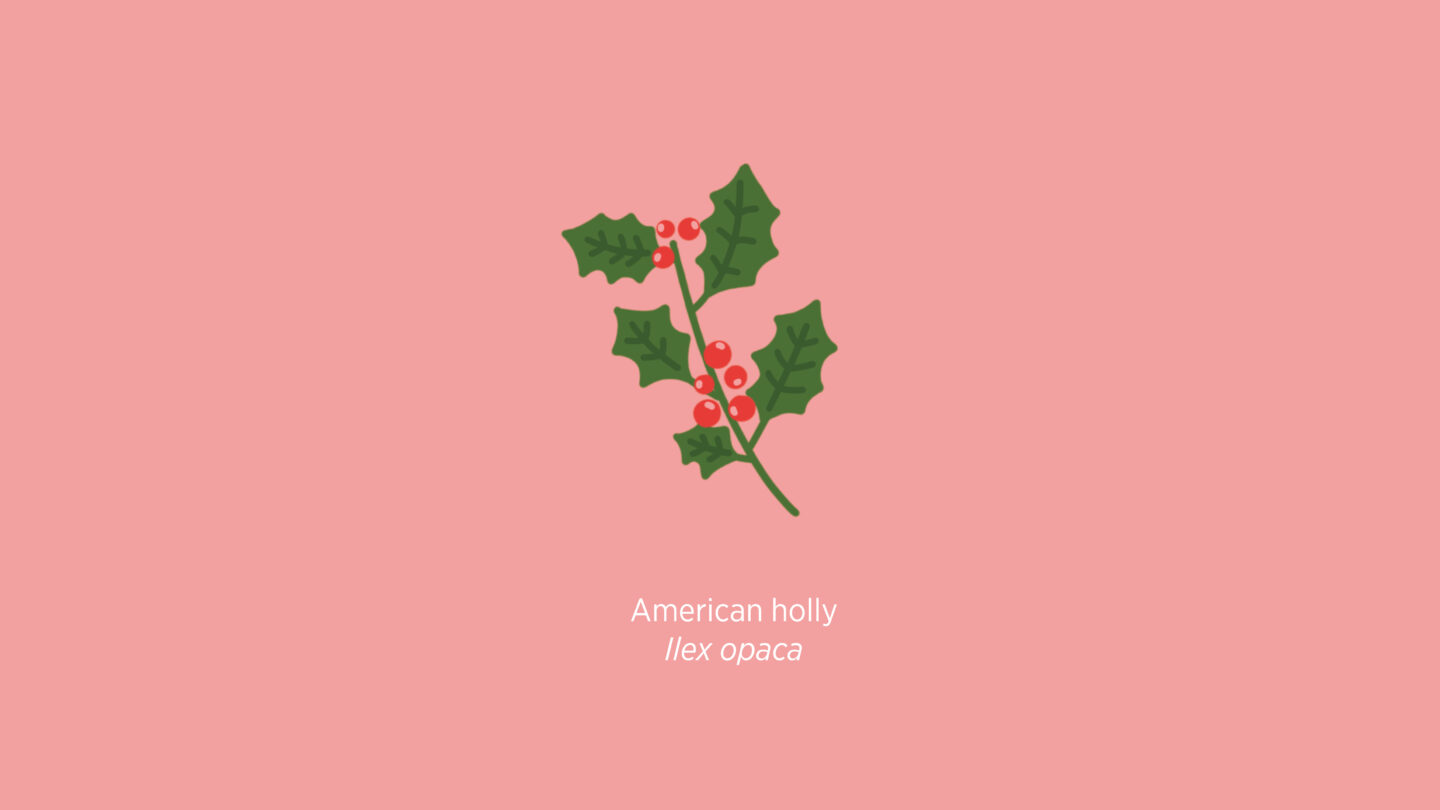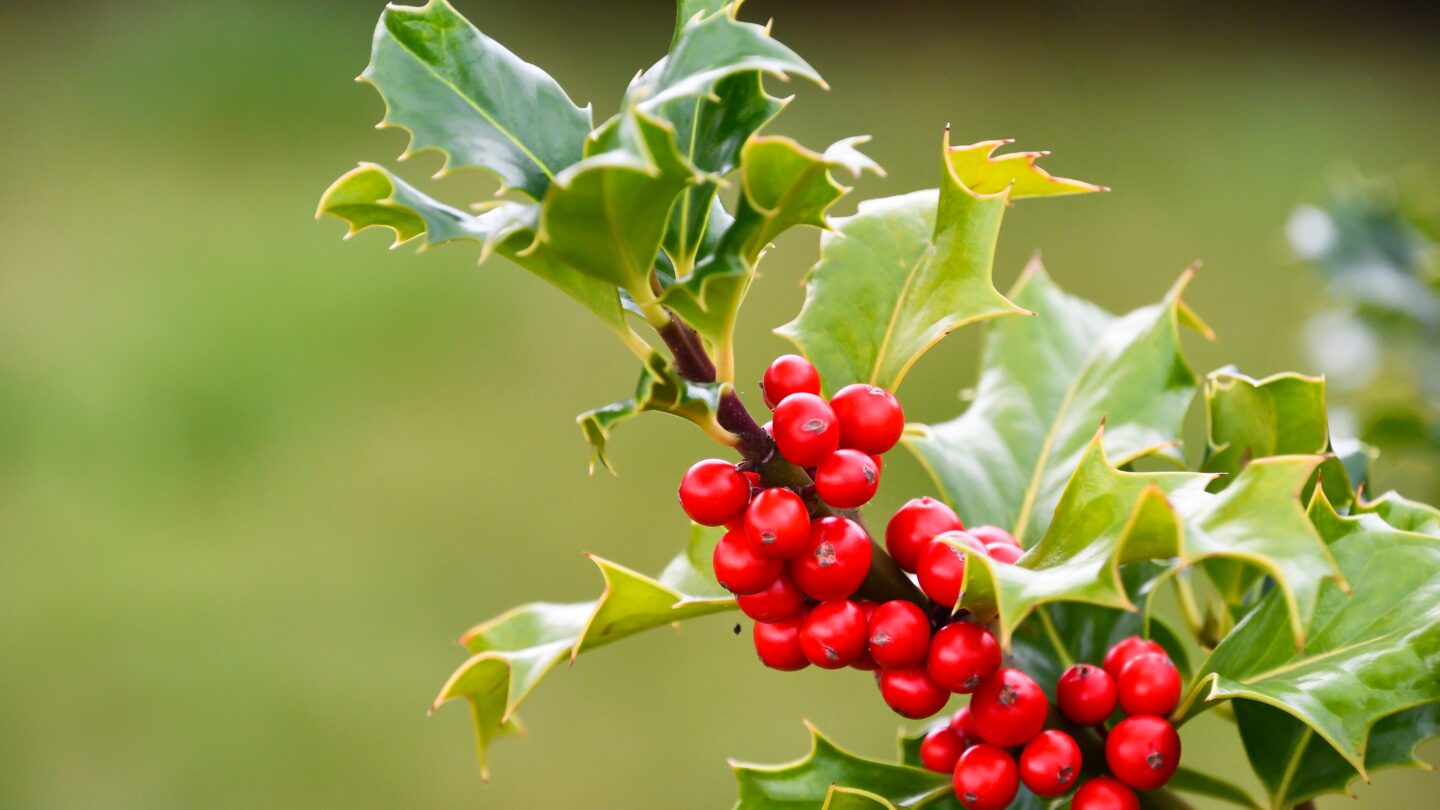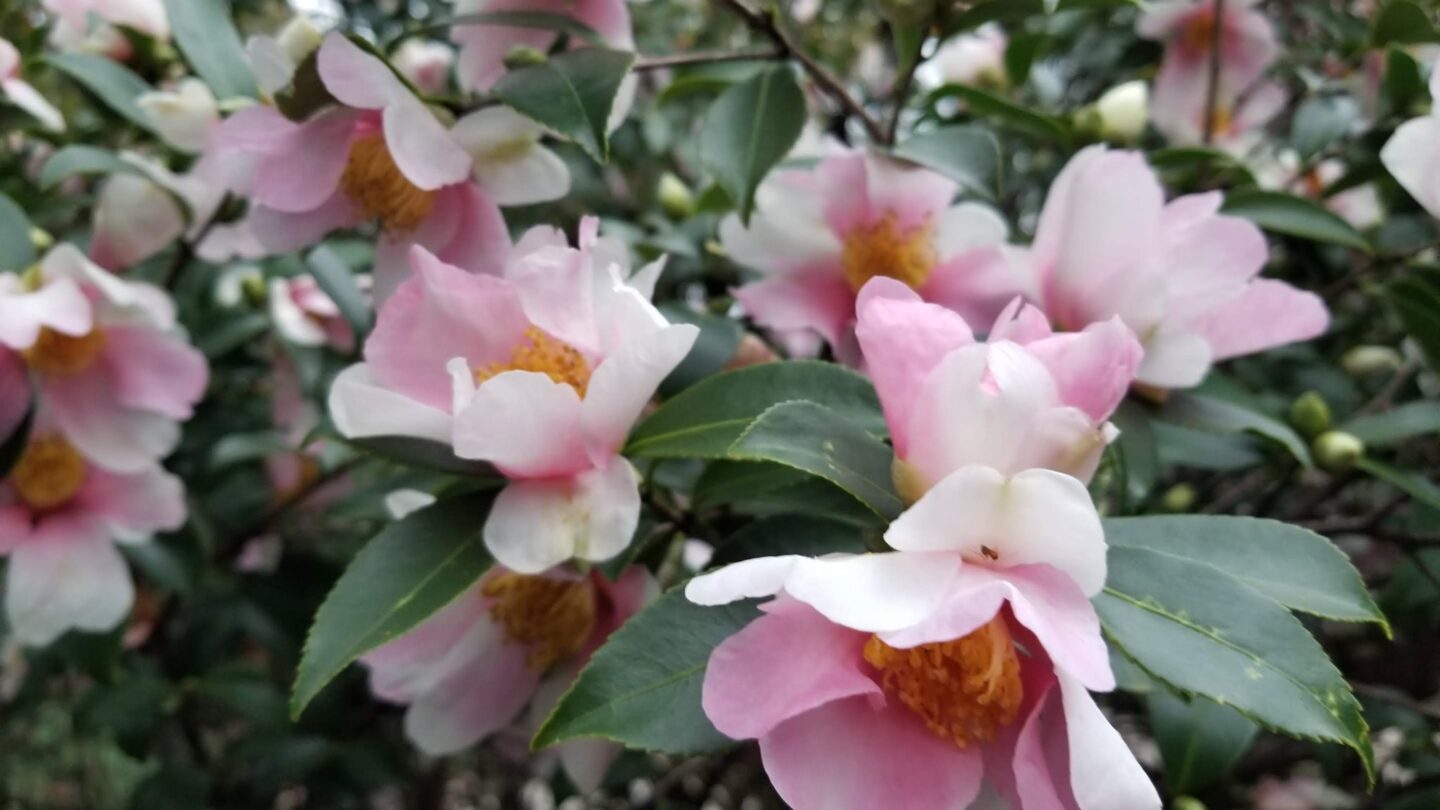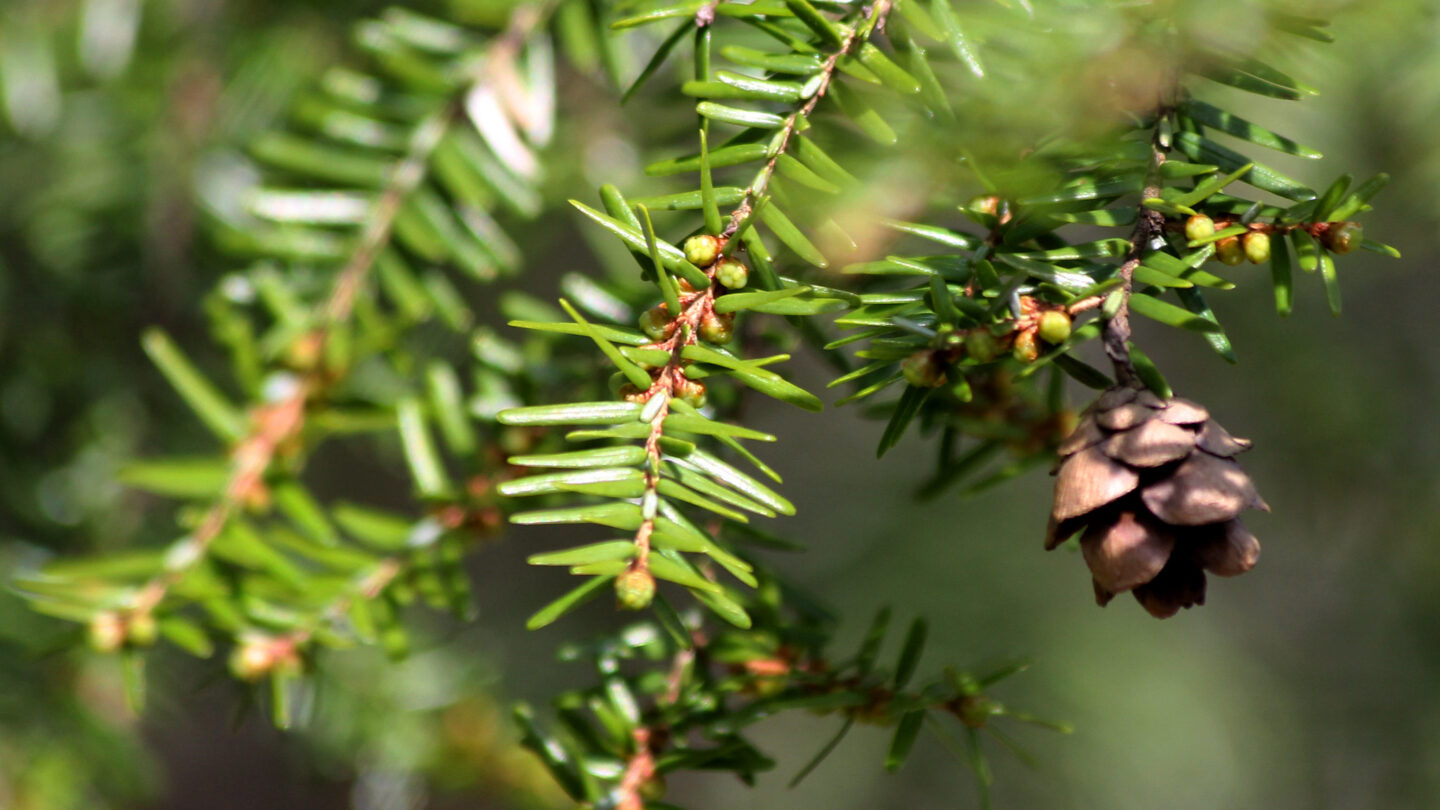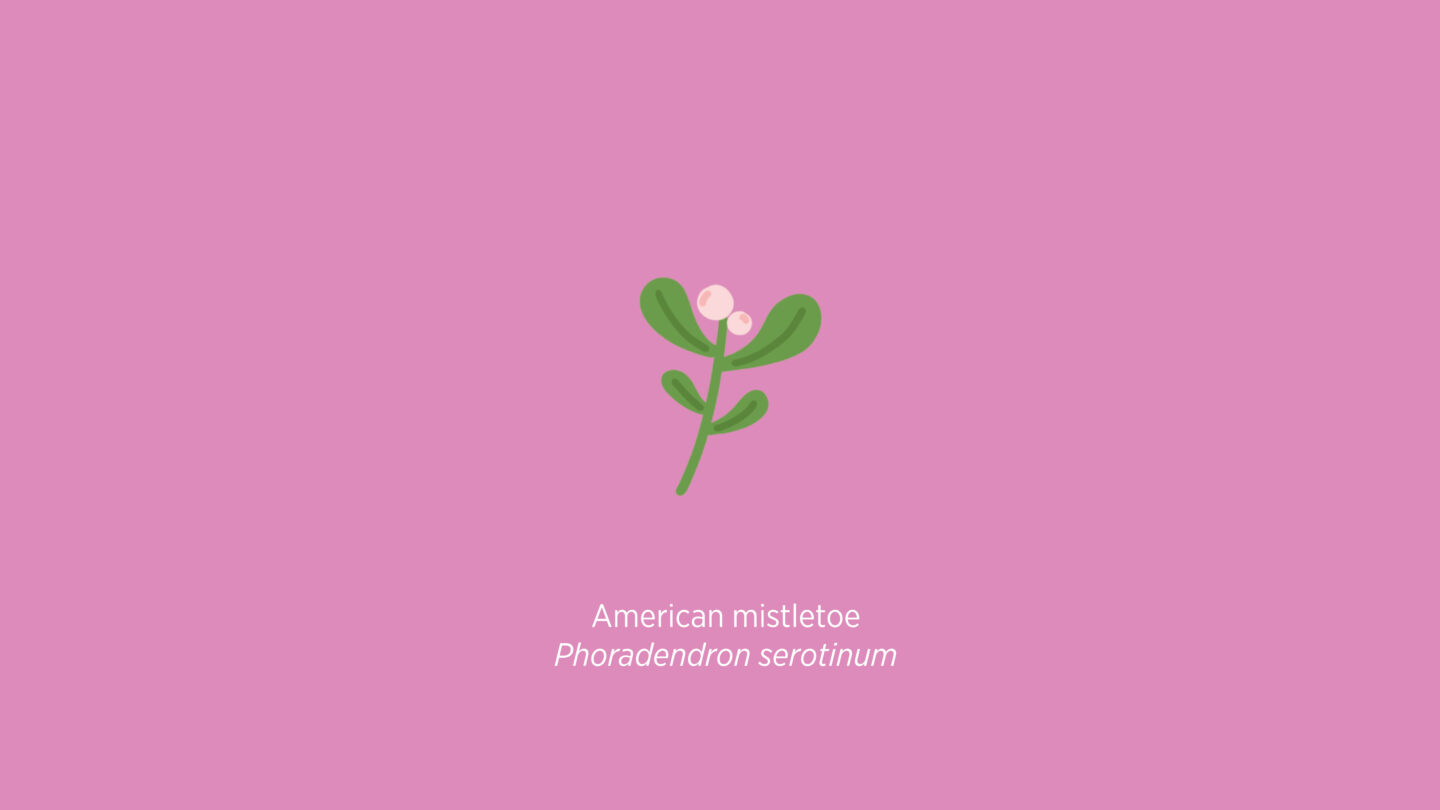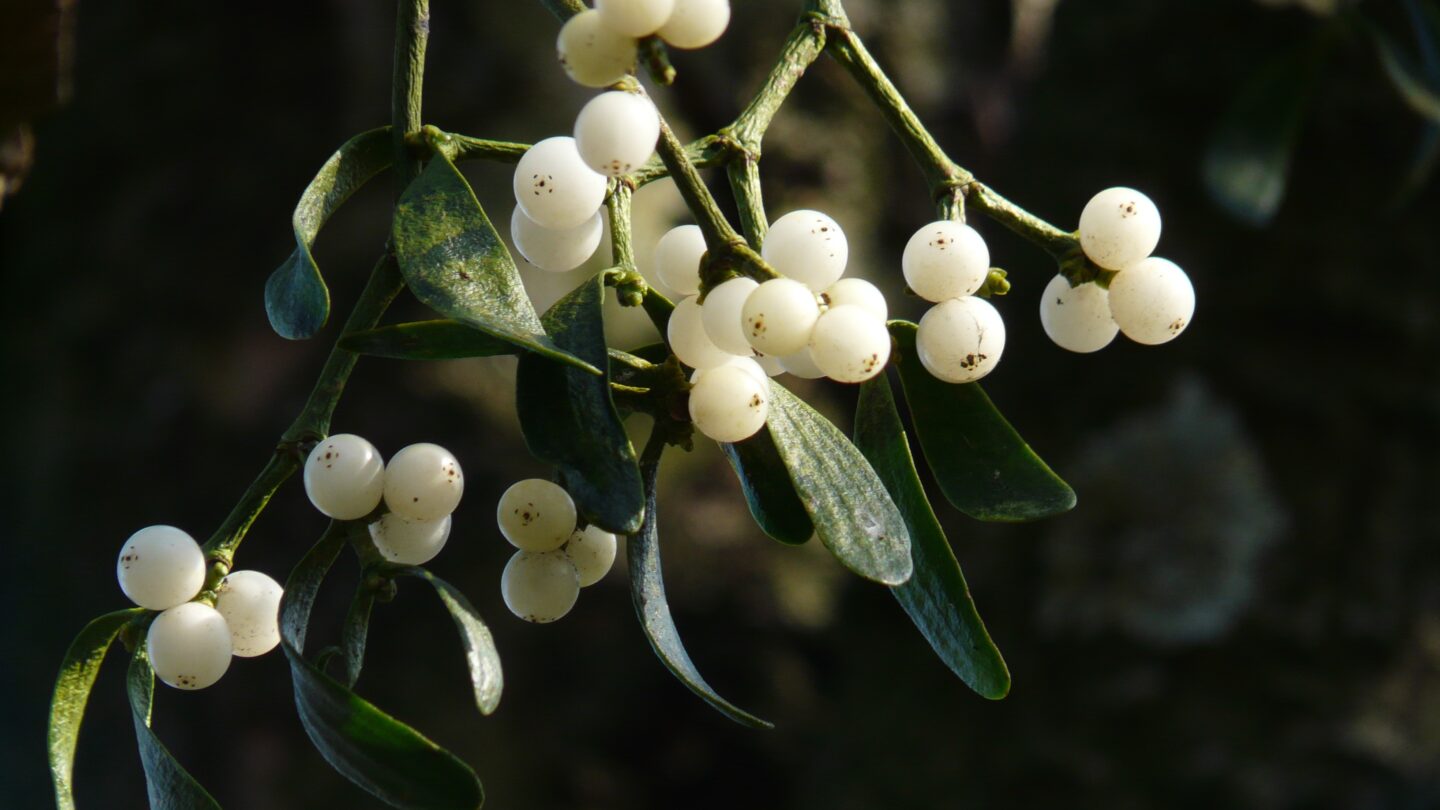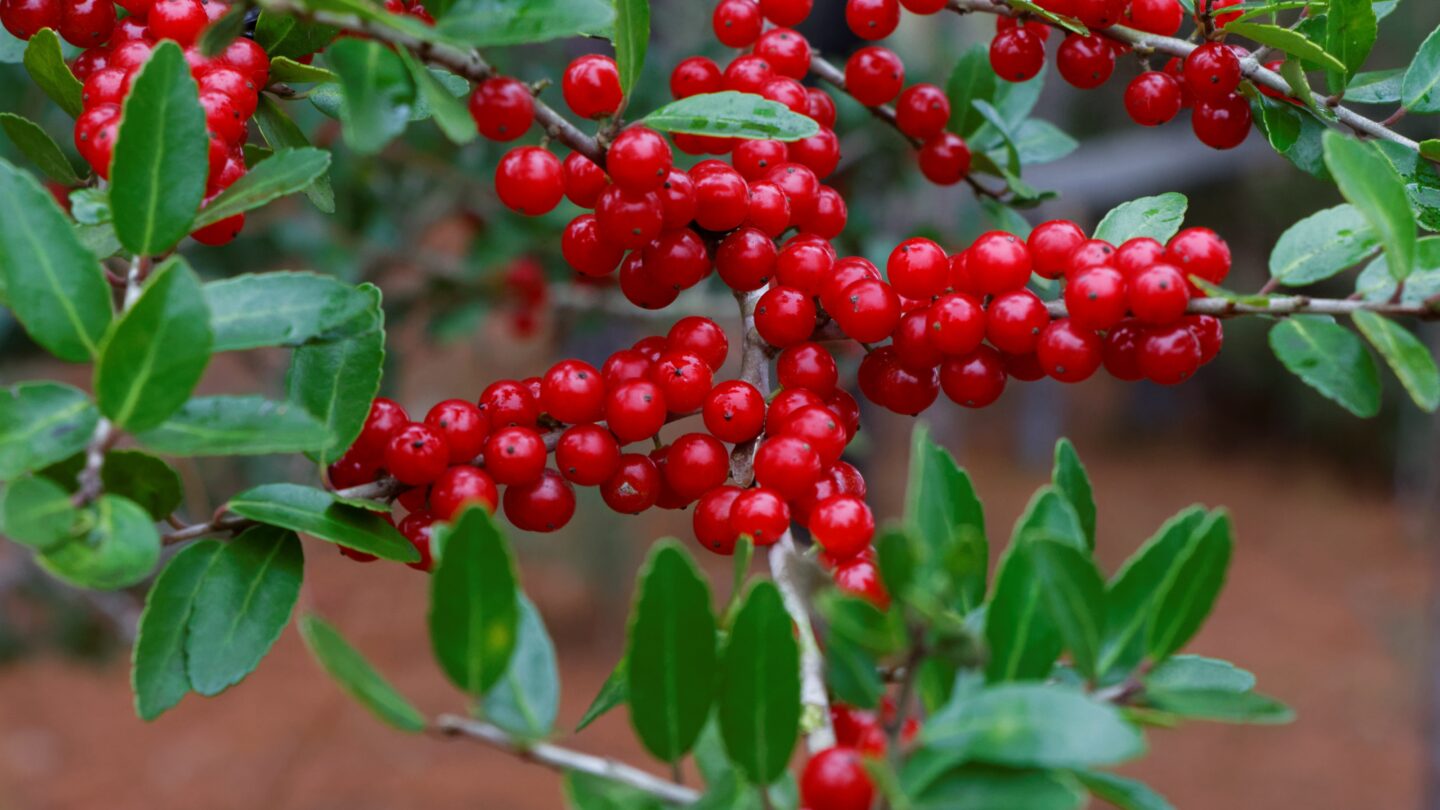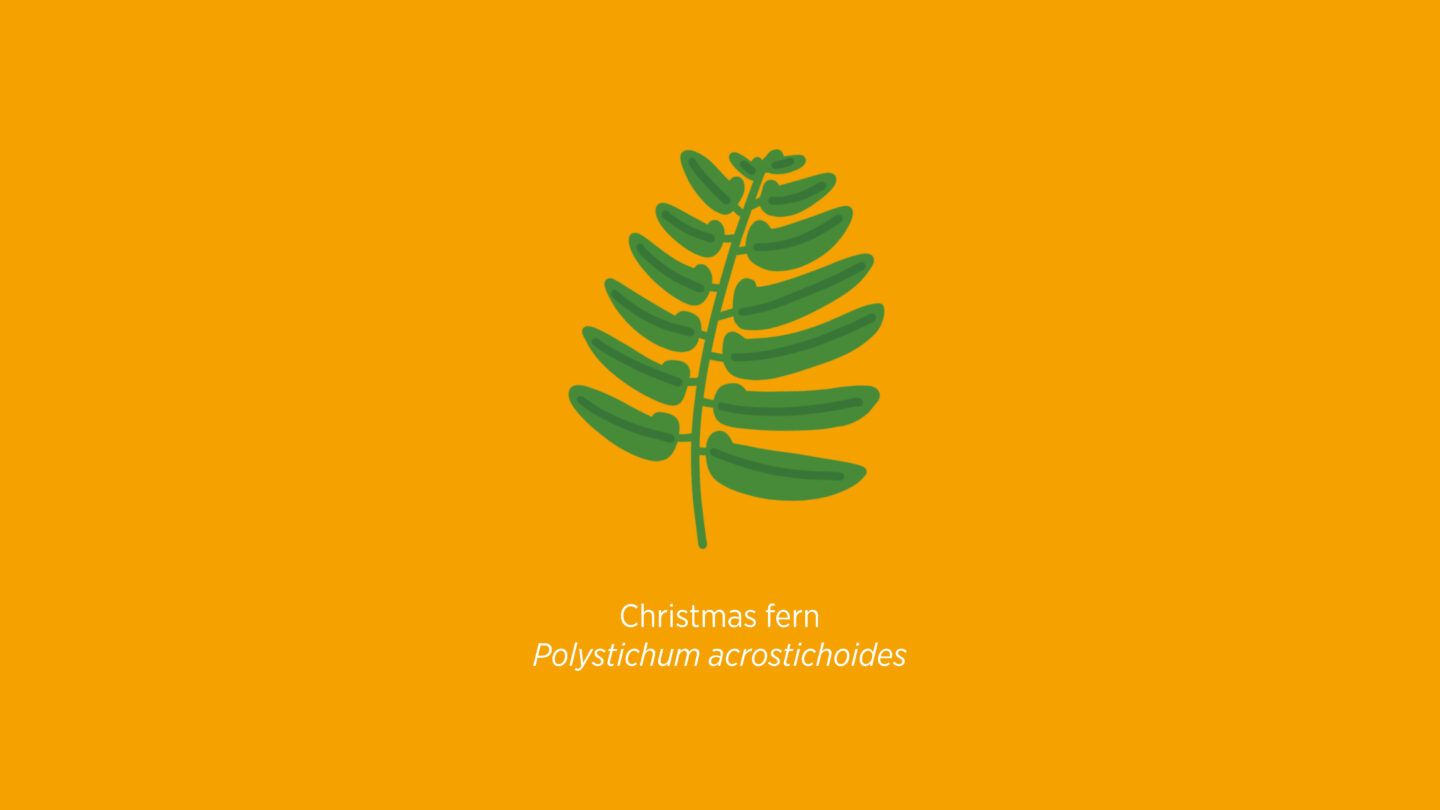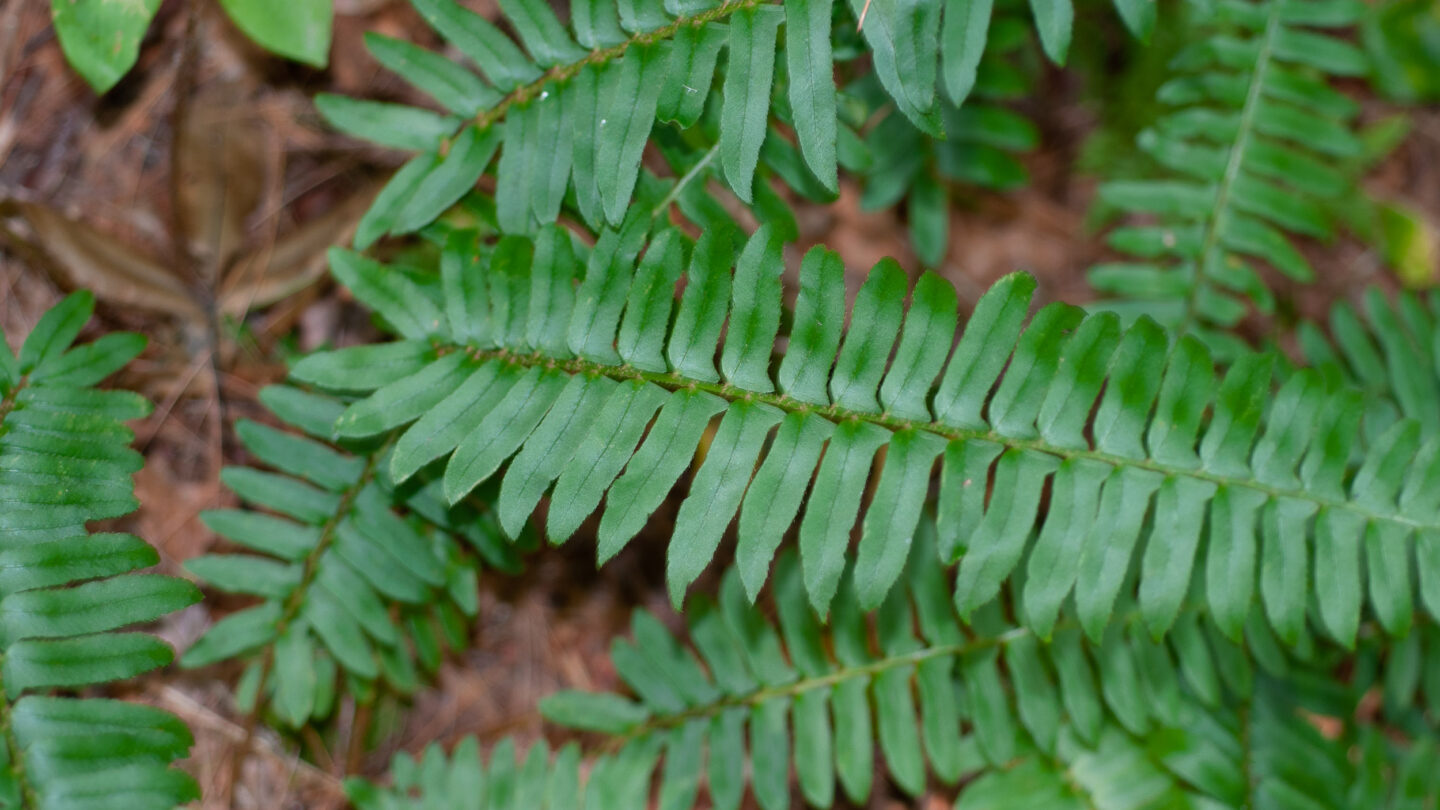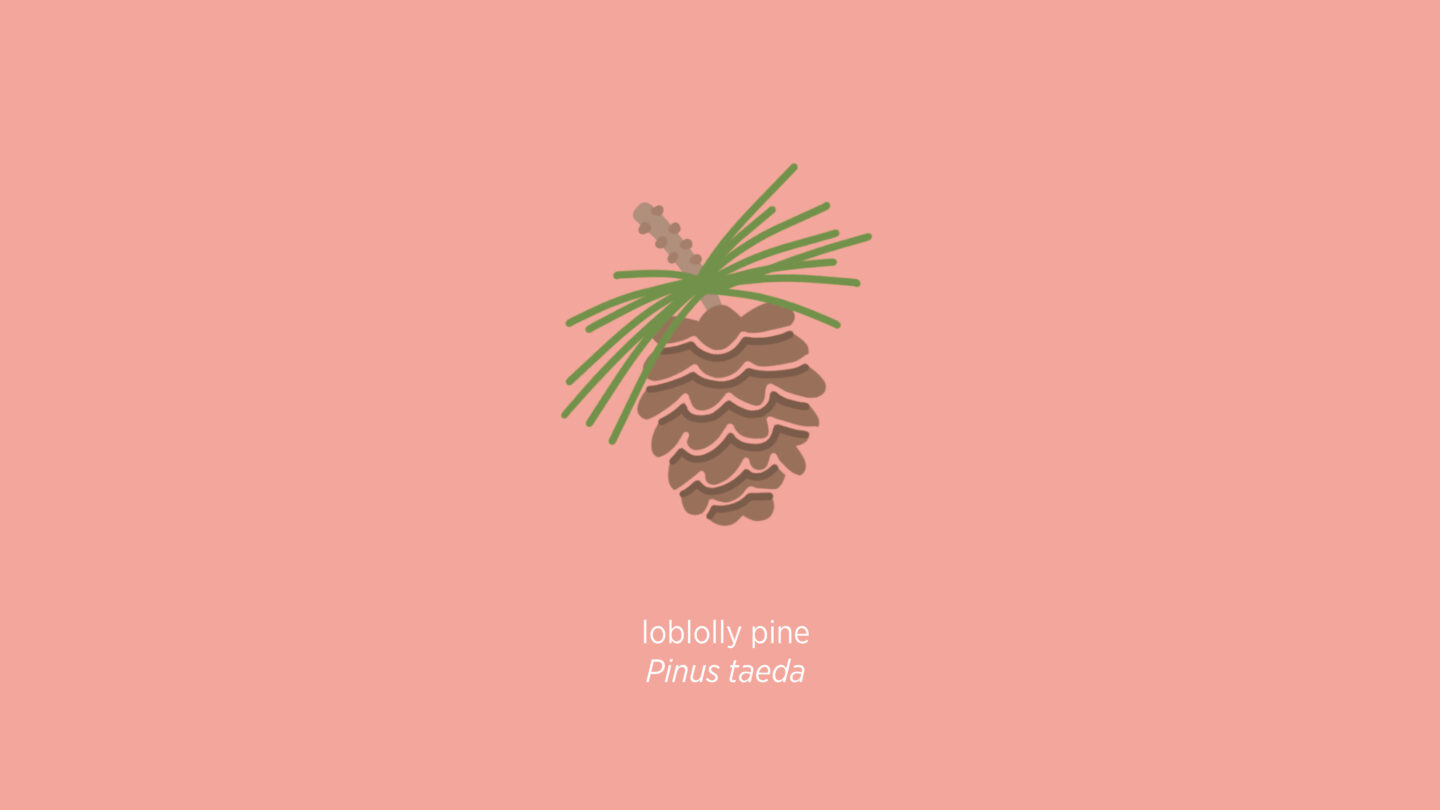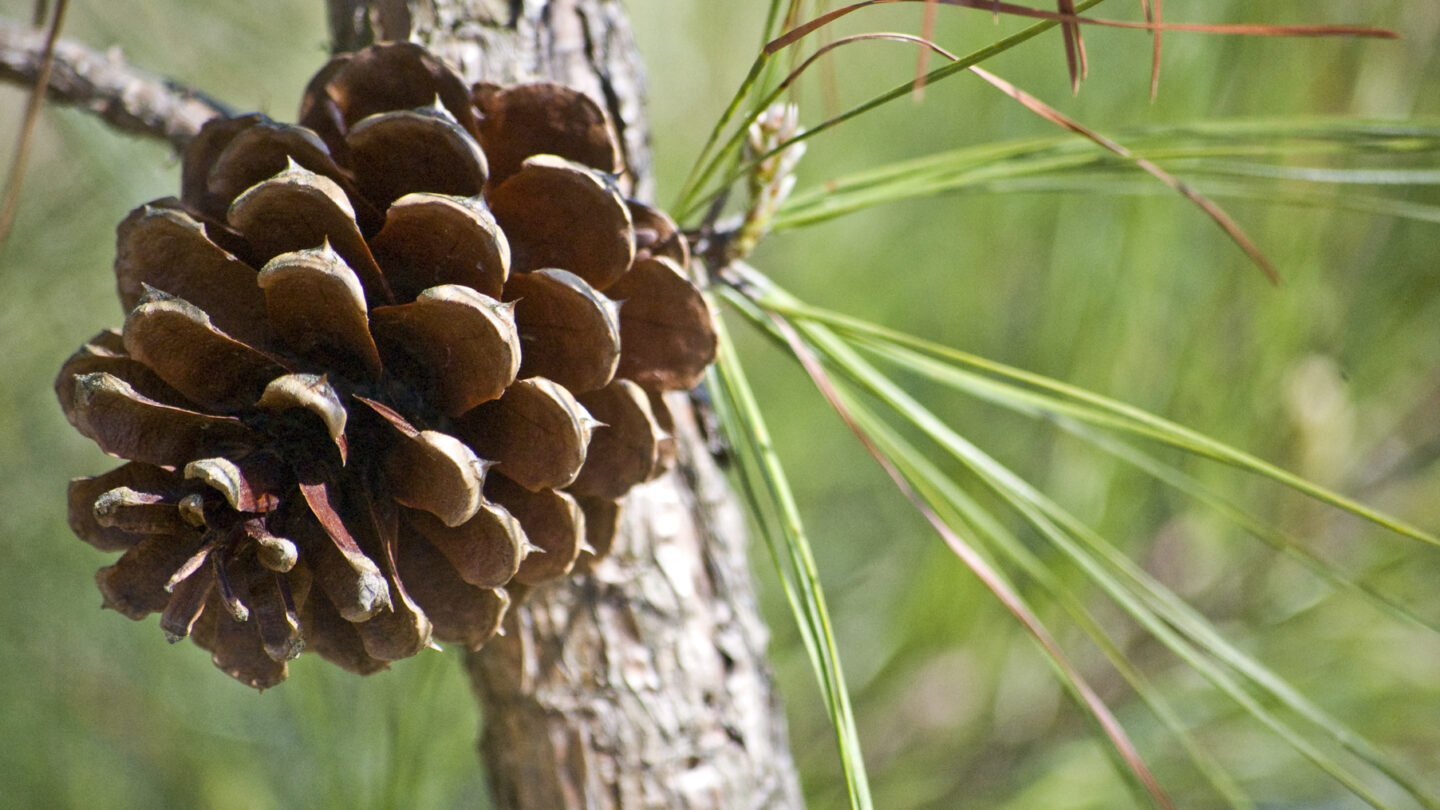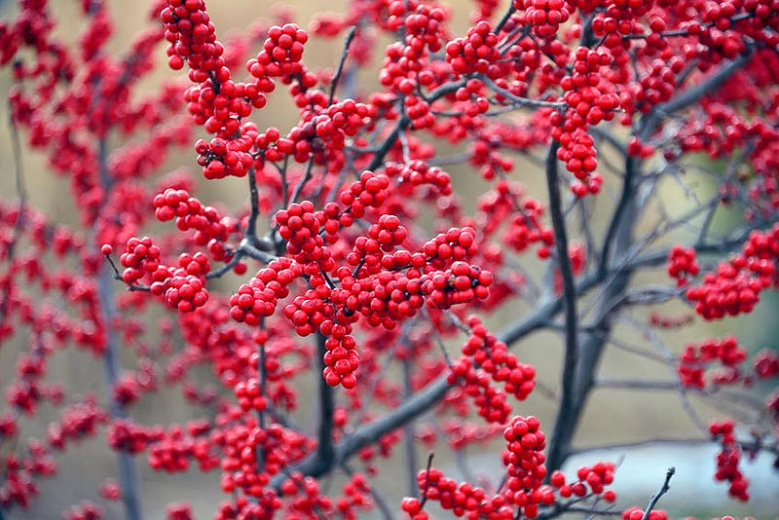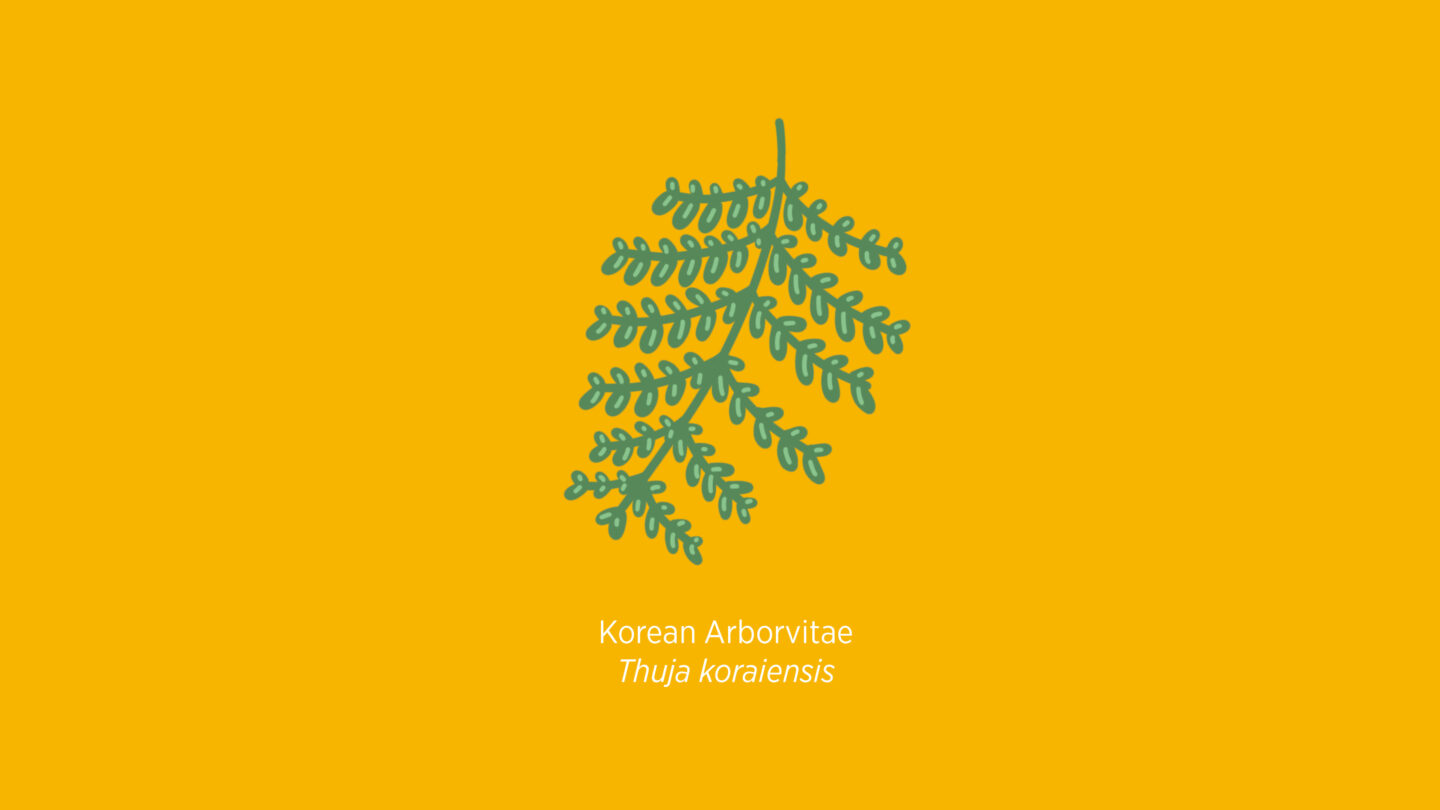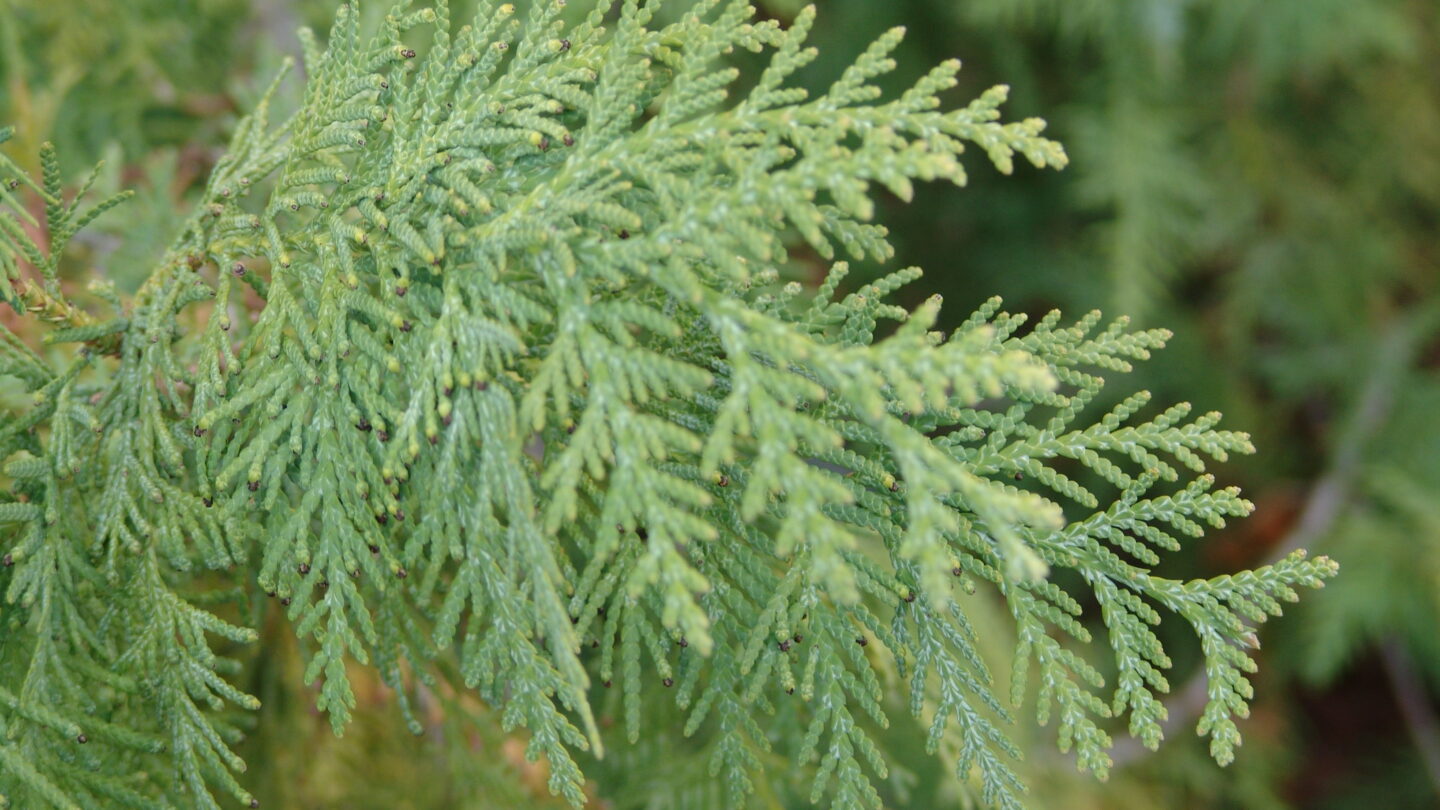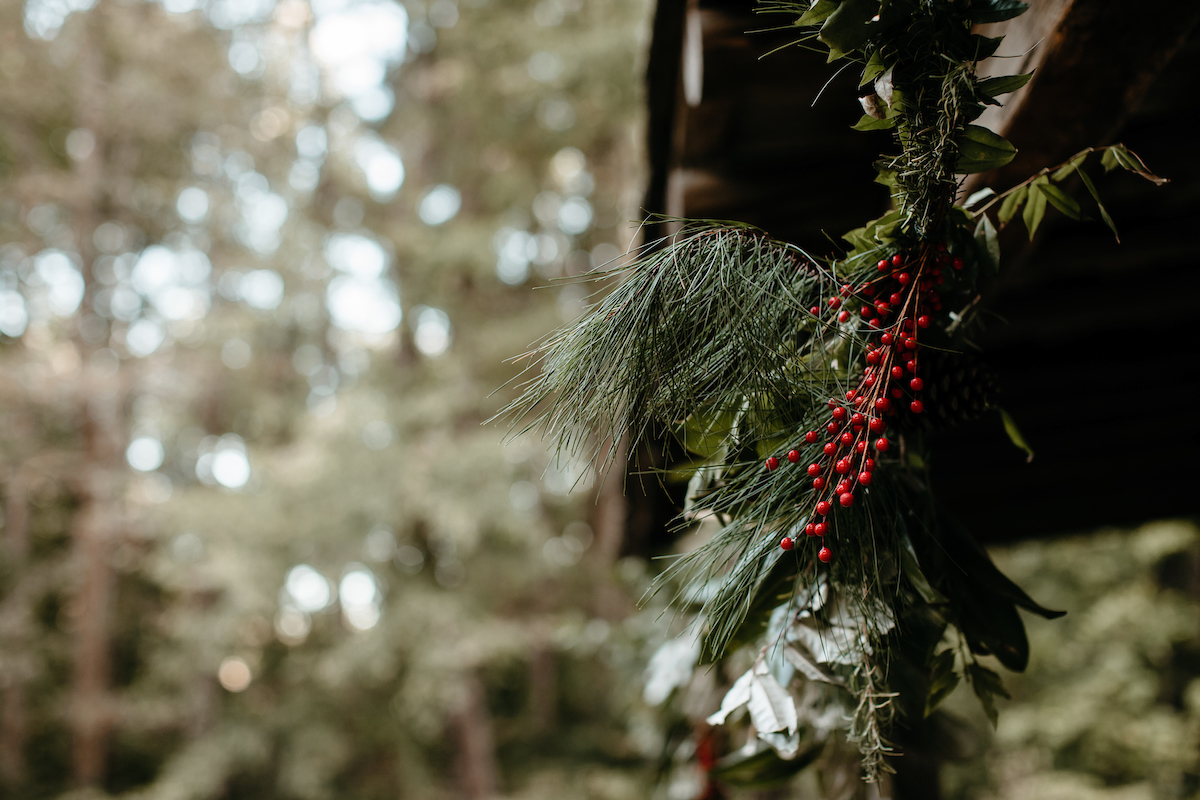
The most wonderful time of the year has arrived—a time for reflection and growth. For those seeking a place of respite and restoration, the magic of the holidays is on full display in Goizueta Gardens. Tidings of joy are planted just beyond our museum doors with holly, camellias, ferns, and more nestled throughout our historic grounds. No other place in Atlanta offers nine distinct gardens in a 33-acre landscape, including preserved woodland, diverse plant collections, and heritage-breed animals. Discover peace on earth—literally—and enjoy this selection of plant species known for spreading holiday cheer throughout Goizueta Gardens.
American Holly.
Botanical name: Ilex opaca
The American holly is a pyramidal evergreen tree native to moist forests in the eastern and central United States. From May–June, the plant bears greenish-white flowers tucked between the spiny green leaves before their bright red or orange berries ripen in the fall on pollinated female trees. Birds love to eat the berries, while humans use them for ornamental traditions such as “decking the halls.”
Location
Camellia.
Botanical name: Camellia ‘Olguita’
Camellias are an evergreen southern favorite, but this one is extra special. This remarkable specimen has a naturally dense and formal shape, and is covered in fall with variegated, willowy blooms of pure white petals streaked with raspberry-pink, crowned with a central boss of golden stamens. Olguita’s Garden at Atlanta History Center features fourteen unique hybrids of Camellia sasanqua, selected from Bobby Green’s hybridizing program at Green Nurseries. With permission from the hybridizer, Atlanta History Center named the one-of-a-kind plant Camellia ‘Olguita’ in honor of Mrs. Olga “Olguita” C. de Goizueta, namesake of Goizueta Gardens. It is registered with the American Camellia Society.
Location
Canadian Hemlock.
Botanical name: Tsuga canadensis
The Canadian or eastern hemlock is one of few evergreen trees native to the Piedmont region of Georgia. They thrive in partial shade with some moisture. Layered branches of very short needles form horizontal sprays that dip towards the ground, adorned with delicate cones. The overall effect is an elegant, pyramidal tree with lacy evergreen foliage. Despite being confused with the hemlock that poisoned Socrates, the eastern hemlock is not toxic. Rather, its needles have a high concentration of Vitamin C that some people use to make tea.
Location
Quarry Garden rim at the amphitheater, Swan Woods near the Wood Cabin and Garden for Peace
American Mistletoe.
Botanical name: Phoradendron serotinum
American mistletoe is the state flower of Oklahoma and is commonly seen in the South during winter. The genus name Phoradendron comes from the Greek phor “a thief” and dendron meaning “tree” which refers to the plant getting some of its nutrients and water by rooting into the tree branches on which they grow. It has oblong, evergreen, leathery leaves on greenish branches. In late spring to early summer, the plant produces small, whitish flowers before showcasing clusters of white berries. These fruits are covered with a sticky substance that is poisonous in large quantities, but harmless to birds, such as cedar waxwings and bluebirds. In ancient times, people associated the berries with fertility and for ages the plant has been associated with the tradition and lore of kissing underneath it. This species is native from New Jersey south to Mexico.
Location
Hopefully not much of anywhere as it’s not a good sign of tree health! However, in most cases, the tree is not seriously harmed. There are some on the oak trees on Smith Farm.
Yaupon Holly.
Botanical name: Ilex vomitoria
Yaupon holly is an evergreen shrub or small tree with tiny green leaves, pale grey bark and bright red berries on female shrubs in fall. It is the only plant native to the United States that naturally produces caffeine—that we know of! Also known as the black drink, the white drink, cassine, cassina, and its Latin name, Ilex vomitoria, tea made from fresh yaupon leaves is comparable to green tea because it boasts antioxidants and can appear greenish when brewed. According to anthropologist and ethnologist William C. Sturtevant, the Spaniards who founded St. Augustine, Florida, learned to drink yaupon tea from the Timucua Indians and consumed it in the way many of us are addicted to coffee or chocolate.
Location
Smith Farm, Swan Woods cabin area, Quarry Garden, Entrance Gardens
Christmas Fern.
Botanical name: Polystichum acrostichoides
The Christmas fern is native to the eastern United States and occurs in both dry and damp climates such as wooded slopes, moist banks, and ravines. It typically grows in fountain-like clumps and features evergreen fronds that are leatherlike and lance-shaped. The shape of its leaflets (or pinnae) is reminiscent of Christmas stockings, making it easily recognizable. Christmas ferns maintain their vibrant green color throughout the winter. In early spring, they produce silvery fiddleheads.
Location
Quarry Garden, Swan Woods (especially on the path from Ambrose the elephant to fern circle)
Loblolly Pine.
Botanical name: Pinus taeda
Loblolly pine is a fast-growing and tall evergreen tree that can grow from 60 to over 100 feet tall. In its youth, it is loosely pyramid-shaped and develops an oval crown at maturity as it loses its lower branches. After losing its lower branches, it casts high shade, beneficial to many plants (and people) in the heat of the summer. The tree grows in medium to wet soils in full sun. Loblolly pines are native to 15 southeastern states and are an important source of food and habitat for many animals. Over 20 species of songbirds rely on pine seeds, and birds of prey such as hawks and bald eagles nest in the high canopy.
Location
Everywhere—tallest near parking deck, Quarry Garden, Swan Woods, Rhododendron Garden, Asian Garden, Entrance Gardens (easiest access to get up close)
Winterberry Holly.
Botanical name: Ilex verticillata
Winterberry does not appear as a typical holly. The leaves are small and oval-shaped without any spines, and it is deciduous, losing its leaves in winter. This slow-growing shrub is native to eastern North America, found along rivers, ponds, and streams and in other damp environments such as swamps, thickets, and low woods. It produces greenish-white flowers in late spring before the female shrubs produce a crop of bright Christmas-red berries in late summer to fall. The berries are highly ornamental, persisting throughout winter and often into early spring. Winterberries provide considerable impact and interest to their landscape, attracting more than 40 species of birds and producing flowers that are favored by bees.
Location
Korean Arborvitae
Botanical name: Thuja koraiensis
Korean arborvitae is native to valleys, slopes and mountain ridges of Korea and northeastern China. As a shrub, it can grow to 15 feet tall, but can reach as high as 30 feet tall when in tree form. The plants display attractive scale-like leaves in flattened sprays that often grow in a weeping fashion. Its leaves are green with contrasting white/silver bands underneath. Unfortunately, this species is endangered, mostly due to deforestation. Remaining populations of this plant in the wild are protected in South Korea and China. The selection of Korean arborvitae called ‘Glauca Prostrata’ makes a very attractive addition to southern landscapes, where it performs beautifully in light shade and well-drained soils.
Location
These are only a handful of the extensive living collections held in Goizueta Gardens. Guests can learn southeastern horticultural history while admiring our carefully curated landscape and unique flora and fauna year-round with a general admission ticket to Atlanta History Center.
For more information on these species or thousands of others, please visit the Cherokee Garden Library.

